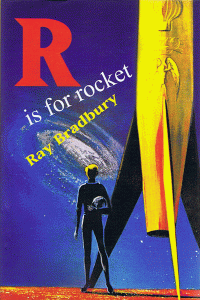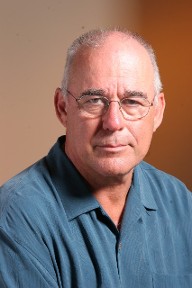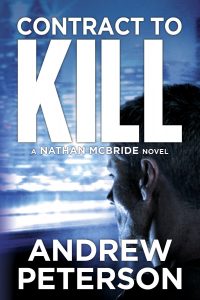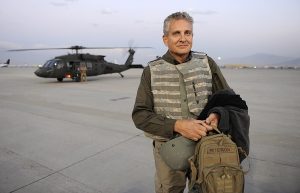Unless you’ve already achieved some level of fame or notoriety, your journey to earn a living as novelist won’t be an easy one. In my case, I had neither. Although I didn’t know it at the time, I was on a collision course with rejection, heartache, and despair.
 I’d been an avid reader all my life. As a child, I preferred reading books over watching television. After graduating from college, I had more time for recreational reading. I really enjoyed the horror and science fiction genres. I devoured books by Ray Bradbury, Dean Koontz, and John Saul. Those writers took me inside worlds I hadn’t dreamed possible and some of them were quite dark. I must’ve read R IS FOR ROCKET, PHANTOMS, and CREATURE three or four times each. Probably even more.
I’d been an avid reader all my life. As a child, I preferred reading books over watching television. After graduating from college, I had more time for recreational reading. I really enjoyed the horror and science fiction genres. I devoured books by Ray Bradbury, Dean Koontz, and John Saul. Those writers took me inside worlds I hadn’t dreamed possible and some of them were quite dark. I must’ve read R IS FOR ROCKET, PHANTOMS, and CREATURE three or four times each. Probably even more.
The idea of becoming a novelist came to me in 1990, soon after my marriage to Carla. She commented on how much I loved to read and asked if I’d ever considered writing a book. Actually, I had. Many times. But but I’d never taken the initiative to get started. So one day, I sat down at my computer and began writing the great American novel. How tough could t be? Since I’d been reading books my entire life, I figured I ought to be able to write one.
In the early 1990s, I was neck deep in real estate development, so I had to carve out blocks of time in the evenings by sacrificing my reading time. After long days of meeting with city planners, brokers, contractors, consultants, and driving countless miles all over creation, I was exhausted and didn’t feel like writing, but I did it anyway. I wrote at night until I couldn’t keep my eyes open. Carla had once asked me why I was so strongly driven to be a novelist. I couldn’t blame her for asking, my behavior must’ve seemed somewhat masochistic. I told her I liked being a developer, but my true love was literature. I was consumed with it and wanted to make my own contribution—albeit a small one—to the Library of Congress.
I kept after it and twenty seven months later, I finished my first novel. I’d done it! My “literary masterpiece” was a horror novel called THE PASSING. It was 165,000 words about an ancient, evil entity that transferred itself from one human to another throughout the ages, from caveman to present day.
It was now time to share THE PASSING with the world. Right? Isn’t that what authors do? I didn’t know who to approach so I queried Stephen King’s former editor Bill Thompson, described my newly completed manuscript, and he agreed to take a look. Wow, I’d thought, I’m on my way to the New York Times bestseller list. Maybe this won’t be so hard after all.
I was about to receive the first of many rude awakenings.
Simply put: THE PASSING was hideous.
Burning it would’ve been insult to fire.
And that’s what Bill Thompson gently told me. When I look back on that episode in my career, it’s a wonder Bill ever spoke to me again. He did, however, offer some words of encouragement. He assured me that all was not lost, and said I handled both characters and dialogue pretty darned well. A glimmer of hope? Perhaps. But I now understood the monumental task facing me. It was not going to be easy breaking into the world of novelists. There were no shortcuts to the finish line.
Adding to the difficulty, I wanted a traditional publishing contract in which a New York publishing house paid me money, not the reverse. There were tons of snake oil publishers that would’ve gladly published my book had I paid them.
No thanks.
I didn’t want to end up driving around with a trunk full of books that would someday heat my house. The year was 1992 and the massive industry of self-published eBooks hadn’t been created yet. The Internet was in its infancy, and “dumb” phones were the size of small bricks.
As tempting as it was, I didn’t give in to the self-publishing impulse. I wanted that traditional contract. Over the next fourteen years, I wrote as a hobbyist, completing five additional novels, a screenplay, and several short stories. In 1995, I started writing a Star Trek: The Next Generation novel. Halfway through that project, I realized I was writing in the wrong genres. Sci-Fi and horror weren’t engaging me on an emotional level. In 1996, I changed direction and wrote a thriller.
I created Nathan McBride; a retired CIA operations officer who began his career as a Marine Corps scout sniper in the 1/8 (1st Battalion Eighth Marines, aka The Beirut Battalion.) I really admire and respect our military, especially the Marines, and making Nathan a Marine was my way of honoring those who serve. It took two years to complete my fourth novel featuring my newly minted Marine hero.
The book was called DEIFIED, and in it, Nathan used his former skillset to track down and “neutralize” a serial killer. For the first time in my life, I felt truly committed to the craft of writing. Bill Thompson helped me edit DEIFIED, and we both thought it was a compelling story. After a year of polishing and editing, I began to query literary agents. The year was 1999.
After receiving my sixth “Dear Author: We’re sorry to inform you…” letter of rejection, my confidence took a major hit. One agency actually returned my query letter with a rubber-stamped rejection across the top that read: THIS IS NOT RIGHT FOR US, BEST OF LUCK IN THE FUTURE.
Needless to say, I was stunned when New York agent George Wieser asked to see the entire manuscript. George read the book, liked Nathan McBride, and offered to represent me. I’d been writing for nearly a decade without success, so the news of getting an agent thrilled me. I knew George was ill, I just didn’t know to what extent. I soon found out. One month after signing me as a client, George Wieser died from complications related to throat cancer. Depression hit me hard when George passed away. Although I hadn’t known him long, I considered him a friend and ally.
I recall sitting in the dark one night, feeling pretty low. I’d lost a friend who’d believed in me. At the time, my faith in becoming a novelist can only be described as bleak. I took a two-year break to clear my head and reevaluate if I had the will to keep going. My future as a published author had been dashed against the rocks. I was physically and mentally exhausted. Over a three-year period, I’d probably taken less than two weeks of vacation.
One night 2002, although I have no memory of it, Carla said I asked her this question: “How does it feel to be married to a failure?” She said her response was: “Andy, you’re only a failure if you quit.” Carla was absolutely right. Yes, I’d lost my agent, but George Wieser lost his life. What Andrew Peterson needed was a metaphorical steel-toed kick in the butt, which Carla happily delivered in order to end my funk. And yes, it left a mark.
Okay, I decided it was time to get totally serious. I committed the next three years of my life to writing book number five. HIGH POWER was the second thriller featuring Nathan McBride. I also signed up for my first writer’s retreat; the 2005 Alaskan Cruise offered by the Maui Writers Conference. I’d decided that writing in a vacuum was not the way to get published. I was about to discover all the things I’d been doing wrong. And there were lots of them.
Just because we all learn to read and write at a young age, doesn’t mean we can be novelists. Similarly, just because we all know how to cut our steak at the dinner table, doesn’t mean we can be surgeons.
If I was going to have any chance of succeeding, I needed to learn the nuts and bolts of creative writing. So in May 2005, I attended the Alaskan Cruise and experienced a major turning point in my career because I met two of my favorite authors; John Saul and Ridley Pearson. Walking into the retreat’s “welcome aboard” cocktail party, I took a deep breath and approached John Saul.

Keep in mind, John has managed to get every novel he’s ever written onto the New York Times bestseller list. There was no sense being shy, so I introduced myself and shook hands. I told him I was a huge fan, which was absolutely true. I was standing in front of the man who’d enabled me to spend countless hours absorbed in the stories he’d created. I’d never met an author before, let alone John Saul, and I must’ve looked like a deer in the headlights. John was down to earth, attentive, and genuinely interested in my career as a writer. He then offered some much needed encouragement, telling me in so many words that quitting was not an option. To this day, I owe John a debt I can never repay. He established the mood and tone of the retreat and it became a life-changing experience.
As fate would have it, I landed in Ridley Pearson’s workshop, and I spent the next six days learning about the art and craft of writing thriller fiction from a master. I remember posing for a photograph with Ridley, holding his latest thriller, CUT AND RUN.
Ridley is a firm believer in Christopher Vogler’s book, THE WRITER’S JOURNEY: Mythic Structure for Storytellers and Screenwriters, and he used it as the foundation for his workshop. I highly recommend this book to anyone who’s serious about becoming a mainstream novelist. Remember Chris Vogler’s name, it will surface again.
So there I was, in Ridley’s workshop, and it was my turn to have a sample of my manuscript read aloud in class. Not just read aloud, but read aloud by Ridley Pearson. I cringed at the prospect. To my surprise, Ridley stopped reading halfway through HIGH POWER’s prologue and stage-whispered, “This is the way I write.”
My jaw dropped. Ridley took me aside after class and suggested I contact his freelance editor, Ed Stackler. He said my writing showed tremendous talent and promise, but it needed some editing. He encouraged me to query Ed, but warned me Ed was super busy, and didn’t take on too many new clients. Receiving this advice from Ridley became one of the pivotal moments in my writing career. At the end of the cruise, we agreed to stay in touch, and we’ve done just that ever since.

When I got home, I queried Ed with a pitch, synopsis, and some sample chapters along with Ridley’s referral. Ed liked the material and agreed to read the entire manuscript. Four weeks later we talked on the phone. He said he had good news and bad news.
I asked for the good news first. Ed told me I had one hell of a voice as an author. So far, so good. Okay, so what was the bad news? My plot resembled Swiss cheese.
Ouch.
I asked if he thought the manuscript could be salvaged and he said no. No? Just like that? I was speechless. Ed must’ve known how devastating the news was because he filled in the awkward silence with some promising words. He thought my main character, Nathan McBride, was a “fantastic hero who’d be ideal for a different and improved plot.”
Despite the pep talk, the news really stung. HIGH POWER was not sellable, and likely never would be. I’d just spent two years on this book, how could I just walk? It seemed outrageous. I had a decision to make. Should I ignore Ed’s advice and try to salvage the novel, or begin anew? After some soul searching, I said goodbye to HIGH POWER, and began writing my sixth novel.
This time, however, I changed my approach and spent four months plotting the new book with Ed because I wasn’t willing to end up with another flop. When we finished assembling the key components of the story, I possessed a clear understanding of the chain of events. Don’t get me wrong, FIRST TO KILL evolved further, and dramatically, during the actual process of writing. But before I jumped in, I had a clear blueprint of the story. I found it tremendously helpful to work from a rough sketch. Looking back at my calendar and counting the number of days I’d spent writing raw manuscript, I discovered it had taken 137 writing days. I’d averaged around 1,000 words per day—about four pages. Some days I wrote 3,000 words. Other days I hardly wrote anything.
Some advice to aspiring authors: Start with an outline or plan of some sort. It doesn’t have to be super detailed, just a sentence or two on 3×5 cards about what happens in the scenes you intend to write. Once you’ve got your cards, you can rearrange them, move them around, change the order, etc. If you get stuck, you can jump forward and write a future scene. It’s important to note that many new writers fail to open their books with the kind of scene needed to hook the reader. The cards will help you do that. I can’t stress this enough: Using a basic outline will save you gobs of time.
Fate works in strange ways. In August of 2005, the same year I attended the Alaskan Cruise, I was sitting on a shuttle bus just leaving the Kahului Airport. I struck up a conversation with a gentleman seated across from me. We talked for a few minutes, and he mentioned he was on his way to the Maui Writers Conference. No kidding, I said, I’m heading there too. He introduced himself as Chris Vogler.”
Wait a minute. Chris Vogler? “You’re Christopher Vogler, author of THE WRITER’S JOURNEY?” I asked. He smiled and said, “Yes, that’s me.” I couldn’t believe it. At this point, I was really beginning to believe in cosmic synchronicity. We spent the drive time talking about his book and the vital role it played in plotting FIRST TO KILL. To this day, I still use Chris Vogler’s book as the last word on developing story structure.
As always, the Maui Writers Conference was time well spent. I enjoyed conversations with John Saul, Gary Braver, Susan Wiggs, Bob Mayer, Jennifer Crusie, Katherine Ramsland, and the rest of the wonderful staff. I even went golfing with Jay Wiggs and Elizabeth George’s husband, Tom McCabe. Yes, I ditched class to play golf. Hey, it was Maui.
At this point, I really needed to finish FIRST TO KILL. I wasn’t bogged down per se, but I wasn’t making the kind of progress I wanted. Ed Stackler kept encouraging me, and in 2006, I pushed hard and finished the manuscript. It was now time to begin the arduous task of rewriting and editing. I went through the manuscript at least fifteen times. By the time I finished, I was sick to death of the thing. I wanted to drop-kick it across the room and watch all 553 sheets of paper flutter through the air.
Ed Stackler took a look and came back with: “Andy, it is solid gold, but it’s too long.” Okay, I could deal with that. I went to work and trimmed 20,000 words. In the end, the book was tighter, faster-paced, and overall, a much better read.
Now comes the five-letter “A” word. I needed an agent to represent me. Don’t get me wrong, I have nothing against agents; it’s the distasteful process of getting one that I found revolting. I’d experienced rejection before getting George Wieser, and I wasn’t looking forward to going through another “gauntlet of grief.” I’m the guy who, when he sees an agent coming down the sidewalk, crosses the street. But there was no avoiding it, I needed a literary agent.
Ed Stackler had someone in mind from a well known agency in New York. We sent the manuscript and received an offer of representation five weeks later. Was I dreaming? All of a sudden, I had an agent and as fate would have it, the first one we’d queried. My agent made multiple submissions to all of the major publishing houses, but rejections began to filter back. I received the entire gamut of comments, but there wasn’t a common thread among them. Some of the rejections are paraphrased below:
”I loved the plot, but your characters didn’t sell me.”
“I loved your characters, but your plot didn’t engage me.”
“Your action is top notch, but the suspense isn’t where it needs to be.”
“The suspense is masterful, but the action unfolded without much fanfare.”
Etcetera, etcetera, etcetera . . . . .
Six months passed without an effective offer on the table. I felt pretty low, low enough to hang up the towel and consider calling it quits for good. My agent urged me to write another novel, but I didn’t have the energy or the desire to shelve my sixth book and start over. In my heart, I truly believed FIRST TO KILL was an engaging story and should’ve sold. And I certainly didn’t want to go through the arduous process of writing an entirely new novel only to end up in the same situation a year later. I asked my agent to submit FIRST TO KILL to some of the smaller publishing houses, but he wasn’t enthusiastic about the idea. I remember thinking: This can’t be happening, can it? Is FIRST TO KILL really dead in the water? It seemed incredible, but there I was, facing the ugly truth that my novel hadn’t sold.
I talked it over with Ed, who recalled a colleague from his New York publishing days. Ed thought the director of sales and marketing, Tim DeYoung, might be willing to forward the manuscript on to Dorchester’s thriller imprint, Leisure Books—assuming Tim liked it of course. What could it hurt, especially since my agent had no further submission plans. I went online and researched Dorchester Publishing. I liked what I saw, even though Dorchester required four to six months to review a submission. I decided I could live with that. So I sent FIRST TO KILL to Tim DeYoung with a pleasant query letter and pitch.
Four to six months sounded like an eternity. As it turned out, I only waited eight days. As I stood in my kitchen, warming a cup of coffee in the micro, the phone rang. I didn’t recognize the 212 area code number, but I answered it anyway.
“Hello, Andy? This is Don D’Auria, Executive Editor from Leisure Books.”
I stopped breathing.
“Hello?” Don said, “Are you there?”
My voice cracked. “Yes, I’m here.” I almost dropped my coffee when he said he wanted to buy FIRST TO KILL. Dorchester Publishing, the oldest independent publisher of mass market paperbacks in America, wanted to purchase my book. Keep in mind, this was my seventeenth year as a novelist. A calmness washed over me like warm wind. I’d done it. Andrew Peterson, was going to be a traditionally published author. I think I exceeded my allowable minutes on my cell phone that month.
But when is life ever that simple. When things seem too good to be true, maybe they are to good to be true.
I contacted my agent to share the good news but I wasn’t prepared for his response. My agent didn’t have a good relationship with Dorchester and he wasn’t willing to represent the sale. You’re kidding, right? No, he wasn’t kidding. Don’t get me wrong; I have the utmost respect for this agent, and I fully understand his decision. He didn’t feel right negotiating a deal he hadn’t initiated or an offer he hadn’t accepted. And admittedly, the money was modest compared to his usual deals. But to a struggling writer like me, it was something real, a tangible contract that would result in my novel being published by a New York publishing house with strong distribution. We amicably agreed to go our separate ways.
So there I was, without an agent, but with a publishing contract. It wasn’t the worst place an author could find himself, but I needed help. The document was twenty pages of small-font legalese. Overwhelmed didn’t begin to describe my situation. I immediately asked for my father’s help. Being a lawyer, he understood the language, but he didn’t know the publishing industry’s standards, what separated a good deal from a fair deal from a poor deal.
I needed an agent, and I needed one fast. Once again, Ed Stackler to the rescue. He provided the name of an agent who just might fit the bill. We sent the manuscript to Jake Elwell of Harold Ober Associates, told him about the pending contract, and asked if he’d be willing to negotiate the deal. Jake read the book, liked it, and offered to represent me. I still owe Jake a debt of gratitude for responding so quickly. He got back to me within six days after receiving the manuscript.
Now, here’s where that magical synchronicity reappears. Remember George Wieser? My first agent? Back in 1999, when George Wieser first represented me, Jake Elwell had been a new associate in George Wieser’s office. When, out of the blue, Ed Stackler revealed this small detail from Jake’s background, I was amazed at the connection.
I felt pretty good. Events and people were converging in a positive manner in my life. Oh, I forgot to mention something that Don D’Auria said during our initial phone call; FIRST TO KILL was too long. At its current word count, it wouldn’t fit into Dorchester’s standard mass-market paperback format. I needed to cut an additional sixty pages. Sixty pages! Keep in mind, I had already trimmed eighty pages from what had once been the “final draft.” Where the heck was I going to find another sixty pages to cut?
Ed didn’t want me to compromise my narrative voice by deleting a few words here and there, so we decided to go the wholesale route. I would delete entire scenes that weren’t 100% germane to the plot. In other words, if the scene didn’t advance the story or significantly enhance key characters, it went onto the chopping block. Problem was, I didn’t think any of my scenes fit the “expendable” label. I was stuck. I mean, really stuck. Think, Andrew, think. How many of these scenes could I sacrifice for the greater good of my novel? I called Ed Stackler and said I couldn’t it. I told him it felt like I’d be putting down a beloved pet because I couldn’t afford to feed it any longer. He asked if I wanted him to do it.
I had a sudden visual of Ed wearing a ski mask, wielding a axe. I considered Ed’s offer for a moment, then decided I needed to “man up.” Don’t get me wrong, I fully trusted Ed, but it felt cowardly to turn my back on the process. FIRST TO KILL was my creation. I needed to bite the bullet and swing the axe myself. And swing the axe, I did. Again and again. When I finished, I felt like my novel was hemorrhaging from bloody stumps.
Another thing, Scenes aren’t independent of each other. A change or deletion in one scene changes many others. In essence, I had to virtually rewrite the entire book. Making matters worse, I undertook this assignment at a difficult time of the year—Christmas. In the publishing world, everything grinds to a proverbial halt. To add yet another layer of complication, Tim DeYoung suggested it would be great to have a few cover blurbs from some of Ed’s best selling authors; Ridley Pearson, Greg Iles, David Dun, Ted Dekker, and Steve Alten. And Tim DeYoung needed the blurbs fast.

Well, folks, authors don’t like to put their names on books they haven’t read, and understandably so. So Ed and I scrambled into action. We chose to approach two of the kindest pros in the business, Ridley Pearson and David Dun. And they both came through! Even though it was Christmas season, and they were both buried with their own projects, they found time to read FIRST TO KILL and write fantastic cover blurbs. Ridley and David, you guys are the best! My warmest thanks to both of you. And let’s not forget Laura Taylor, who also wrote a wonderful cover blurb and helped me during the editorial process. Thank you, Laura. I feel truly blessed to be associated with such talented and generous people.
Although painful, my wholesale deletions in FIRST TO KILL did the trick. I submitted the trimmed manuscript (107,000 words) to Don D’Auria in mid-January of 2008. He had his production department take a look, and we received a positive nod. We were good to go and soon we had cover copy and jacket art. In short, we were hurtling down the road to publication.
* * *
Looking back, I’m glad I made the decisions I did. My life would be completely different had I’d changed just one thing, but that’s true of everyone.
 I’m currently under contract with Thomas & Mercer for books six and seven in the Nathan McBride series and I’m having a ball. Writing manuscript is a solitary endeavor, but once it’s finished, the process transforms into a collaborative effort. My editor Alan Turkus and the Thomas & Mercer team of Jacque Ben-Zekry, Tiffany Porkorny, and Grace Doyle have made my journey as a novelist an amazing experience. I also owe a big thank you to Jeff Belle, Vice President, Amazon Publishing.
I’m currently under contract with Thomas & Mercer for books six and seven in the Nathan McBride series and I’m having a ball. Writing manuscript is a solitary endeavor, but once it’s finished, the process transforms into a collaborative effort. My editor Alan Turkus and the Thomas & Mercer team of Jacque Ben-Zekry, Tiffany Porkorny, and Grace Doyle have made my journey as a novelist an amazing experience. I also owe a big thank you to Jeff Belle, Vice President, Amazon Publishing.
My biggest and warmest thank you goes to my wife Carla. She’s been, and continues to be, the stabilizing force in my life and I’d be lost without her. She was there for me when things seemed hopeless. My wife and I are a team and we make decisions together.
As you read this, you might’ve gotten a sense of how difficult and emotionally draining a career as a novelist can be. Conversely, it can be equally rewarding. Receiving an email from a reader who loved one of my Nathan McBride adventures lifts my heart and encourages me to keep delivering the best product I can.
Writing is a rollercoaster ride. My advice to authors who are still struggling: keep going, never quit, and believe in yourself. To the extent you can, surround yourself with trustworthy and supportive people. Be humble, and consider this simple truth: If you don’t write it, nobody will ever read it.

Short Bio:
A native of San Diego, Andrew Peterson began writing in 1990. The Nathan McBride series, published by Thomas & Mercer, features a retired CIA operations officer who began his career as a Marine Corps scout sniper. Andrew’s debut novel First to Kill, reached #9 in the US Kindle store and #1 in the UK Kindle store. On a USO tour in 2011, Andrew had the honor of visiting our service members in Afghanistan. To date, he has donated more than two thousand books to wounded warriors and troops serving overseas. He and his wife, Carla, live in Monterey County, California.
www.facebook.com/andrew.peterson.author
www.twitter.com/apetersonnovels
For more information about Andrew, please visit his website at: www.andrewpeterson.com.








